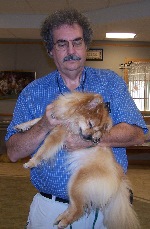By: Char Jensen
Why giving back now is the key to your Reiki business’s future success.

Every entrepreneur knows that the early days of building a new business from the ground up are challenging, exhausting and even exhilarating. But in the wild rush to find new customers, get the word out and turn a profit, it’s easy for business owners to neglect one of the most critical strategies for success: giving back the community. Although doing so may seem to go against the conventional wisdom on your road to making sales (“How can I make money when I give things away for free?”), the reality is, it’s just smart business.
It’s a secret long known by uber-successful corporations—from American Express to Zappos.com. Companies such as these make corporate social responsibility a priority, lending a hand to the communities where their employees live and work. The move strengthens communities, sure, but also boosts their brand in the process.
You may be thinking that it’s easy for multimillion-dollar companies to give back, and that might be true. They’re not stuck in the trenches like you are, working 12-hour days just to secure the next paying client. But the reality is, giving back is not just for big companies. Small ones—especially those in the startup stage—that donate their time and services to a cause aligned with their business’s goals find it’s an invaluable way to broaden their network, raise their business’s profile and, yes, even make sales.
“Giving back is an essential part of establishing your startup’s brand,” says Rieva Lesonsky, CEO of GrowBiz Media in Costa Mesa, California, and a nationally recognized expert and speaker on entrepreneurship and small business. “Everyone prefers to do business with people they know. Showing up and taking part in local activities allows you to meet face to face, and establish actual relationships with potential and current customers. You can spend a lot of money and time on marketing and social media campaigns (and I’m not suggesting you shouldn’t invest in those), but nothing works better—or faster—than showing up and letting your community know you’re there and you care.”
Building Relationships, Building Trust
Support is at the heart of the Shelter Animal Reiki Association’s nonprofit business model: support for SARA teachers to pursue their work with their animal member organizations, and support for the animal shelters, sanctuaries and rescues dedicated to helping homeless animals. SARA is a pioneer in the field of holistic animal therapy and on the forefront of forward-thinking shelter/sanctuary/rescue wellness programs. A 501(c)3 corporation with members across the U.S. and in England, SARA has created a standardized program of animal Reiki (a Japanese system of energy healing) training and treatment programs to support the health and wellness of animals in shelters, sanctuaries and rescues as well as the caregivers at each animal organization. Through SARA’s ongoing professional development, training and evaluation program for members, SARA seeks also to promote the highest standards in animal Reiki practitioner and teacher excellence.
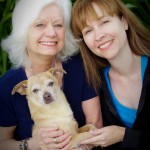
When you are first starting out, making yourself known at a particular shelter—that you are a trustworthy and professional business owner—is critically important. Kathleen Prasad, cofounder and president of SARA, found this to be true in the early days of her business, Animal Reiki Source, especially as she started volunteering at BrightHaven, a sanctuary for senior, disabled and special needs animals in Sonoma County, California.
“It’s really true that it’s all about relationships,” Prasad says. “When I first began, my business was struggling financially, and it was quite a risk to give so much freely. But I felt in my heart—seeing the amazing work that they do, knowing the caliber of people that Gail and Richard [owners of BrightHaven] are—that this was the right thing to do. The only way that I wanted build my business was through the integrity of a strong core of service. And so I stepped forward, not knowing how this would play out, and having no other person in whose footsteps to follow.” Today, she is able to support a viable animal Reiki business full time, and also give back to BrightHaven on a regular basis, both energetically (through Reiki) and financially.
When Joyce Leonard began Santa Cruz Reiki Works in Ben Lomond, California, she ran into a common obstacle many new Reiki businesses face. “A year ago, before SARA, I approached an organization about animal Reiki training. They turned me down,” she says. “They didn’t know me from Adam. So I became a good, reliable, consistent volunteer—and I only volunteer for a few hours a month, so it doesn’t take a lot of time. Now they are interested, and I’ve even received a referral from one of them, and the director hired me for a treatment.”

Building your Reiki business will take time, but as Kelly McDermott-Burns, founder of HeartSong Reiki and HeartSong for Animals in Stockbridge, Vermont, has found, giving back to animal organizations is time well spent. She works with the Rutland County Humane Society, the Central Vermont Humane Society and The Hooved Animal Sanctuary. “I have found service work—free clinics, speaking on Reiki—to be extremely rewarding and a great way to get your name out there. Any free services or discounts will give you exposure and give returns in the future.”
“The SARA suggestions to teach the staff for no charge and the volunteers for half price is a great idea,” says Jodie Brenner, who, as founder of Equushearts~Reiki for Animals and Humans in Bend, Oregon, works with a local animal hospice. “I have not had a problem doing this and find that everyone has been especially grateful. One of the volunteers insisted on paying the full price, as she felt she got so much from the workshop. Donating a portion to the nonprofit is well worth that to me. I have a place to teach, I am supported, and it is my offering to the community.”
Building positive relationships with local shelters and rescues has helped Janet Dobbs, founder of Animal Paradise Communication & Healing in Oak Hill, Virginia, build her business. “You can make wonderful contacts at a rescue or shelter,” she says. “Some of these people could become your best clients or students. They may refer their friends to you and spread the word about you and your work. Networking is one of the best ways to grow your business. Once the word is out, you are golden! You will have more than enough work and business and will be able to continue to give back to the animals.”
Animal Reiki is still just gaining traction in the United States and internationally. And unfortunately, it’s more difficult to grow a business when your customers don’t yet understand what you sell. But that’s why SARA’s philosophy of giving back is so empowering to the Reiki entrepreneur. Volunteering is your key to building a profitable business doing what you love: helping animals.
“For over a year, I ‘stuck to my guns’ and was reluctant to lower my prices or give away treatments or training. I felt that my prices were fair and that people needed to pay–it was a fair exchange,” says Leonard. “One day I had a huge insight. I realized that I wasn’t giving hardly any Reiki treatments and that I hadn’t taught any classes (I couldn’t fill them). It was difficult to even justify calling myself a Reiki teacher or practitioner since I was not engaged in doing either. I asked myself, ‘Do you want to do Reiki or do you want to hold out until people come and start paying?’” She wanted to do Reiki—so she reevaluated her payment structure. She started to offer some complimentary treatments, some on a sliding scale, donation-only Reiki Shares and free drop-in clinics. “Now I am giving it away, and suddenly, my phone is ringing with paying clients!” Leonard is happy to report she just taught her first class.
Evolving—As an Entrepreneur and Reiki Practitioner
Establishing alliances with local shelters, sanctuaries and rescues will benefit you in another very important way, one that you may not have considered. The volunteer experiences you have with animals and staff will teach you important Reiki lessons and help you grow as a practitioner.
“On a professional level, I have had the opportunity to work on many different animals: dogs, cats, goats, sheep, pigs, bunnies, birds, chickens, horses and hamsters,” says McDermott-Burns. “I have gained quite a bit of experience from the wonderful variety of creatures available at my shelters. Personally, I must say the most profound lesson I have learned is that the kindness of the human spirit far outweighs cruelty. On the days when I feel the burden of what some of these animals have endured, someone will come in and adopt an animal with health issues, or a crusty old dog near the end of his time on this plane–animals that seem to be unadoptable because of the special care they need. It lifts my heart to know these animals will finally have a loving home. It gives me the courage to stick it out when I just want to go home and cry.”

“My relationship with Animals In Distress has given me a great deal of experience in offering Reiki to animals and to their caretakers,” says John Sawyer of CritterReiki.com in Topton, Pennsylvania. “That experience has been valuable in working with animals and their people outside of AID. Volunteering there has shown me the power of a clear vision and purpose. I have also been blessed to learn from many animals in the time I’ve been involved there. Animals are such amazing teachers!” AID has yet to sign on as a SARA member organization, but Sawyer is working toward that goal.
Promoting Your Business Through Service
When you build relationships with local animal organizations, you gain access to valuable opportunities for promoting your business to the community at large. Your professional network will begin to widen, and you’ll get the chance to volunteer your time and expertise in numerous ways: speaking opportunities, fundraising events, trade shows, auctions and more. “Taking part in community events instantly telegraphs that you care about what’s going on in your neighborhood, and not just about making money,” says Lesonsky, who is also the bestselling author of Start Your Own Business.
As an entrepreneur, it’s vital you stay current on what’s happening and get involved every chance you get. “The most important lesson I have learned is that you have to get yourself out there in the community before you try to sell them on something,” says Leonard. “This means to volunteer in the organization. Help them out and get known. Join their online groups and forums. Participate, write in their newsletters, do high–profile volunteer work that will get you noticed by the right people. Help them out when they’re in a pinch.”
That’s what McDermott-Burns does. “When I participate in shelter fundraisers, I often get free advertising aimed at the people most likely to use my services,” she says. “I also enjoy educating people on the benefits of Reiki for themselves and their animal companions. In addition, I meet many people at shelter events who are interested in classes or sessions.”
The animal Reiki practitioners we spoke to for this article are SARA members. They follow SARA’s policy on donations and fees: free Reiki treatments at shelters, sanctuaries and rescues; free training for the staff of these organizations; teaching volunteers at these shelters for half price; and donating 20-50 percent of proceeds back to the shelter when animal Reiki classes for the general public are taught there.
Add it all up, and you are getting the word out, expanding your professional network, interacting with potential clients, honing your skills as an animal Reiki practitioner, boosting your brand and building a reputation—all for the price of time and a small portion of proceeds, both of which directly support the causes you care deeply about. As Prasad says, “When you are giving back to the animals, to people, to organizations who are lights in this world—it’s time well spent, and you are making the world a better place!”
By: Char Jensen, SARA Publicist
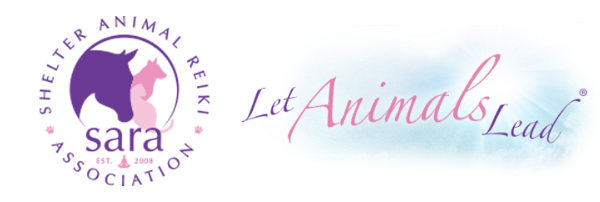
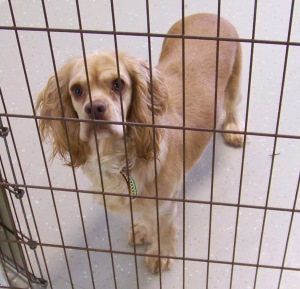 Macy is a beautiful brown Cocker Spaniel with a bit of white on her. She was recently brought to
Macy is a beautiful brown Cocker Spaniel with a bit of white on her. She was recently brought to 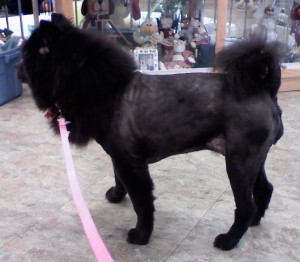 My latest “mentor” is a senior black Chow dog named Tulip. She arrived at AID a few weeks ago badly matted with some physical injuries that needed tending to. She is now sporting a lion cut, but her coat is growing out and will soon be back to its full glory.
My latest “mentor” is a senior black Chow dog named Tulip. She arrived at AID a few weeks ago badly matted with some physical injuries that needed tending to. She is now sporting a lion cut, but her coat is growing out and will soon be back to its full glory.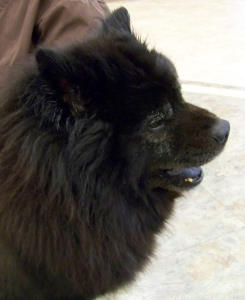 We went back inside and she reluctantly stayed with me as far away as the leash would allow her. I knew she would not like being closed in the introduction room with me, so we stayed in the hospitality area near the front desk. She was quite happy to see Lori and other kennel staff as they came by, but kept her distance from me. After a short while, I turned her back over to Lori.
We went back inside and she reluctantly stayed with me as far away as the leash would allow her. I knew she would not like being closed in the introduction room with me, so we stayed in the hospitality area near the front desk. She was quite happy to see Lori and other kennel staff as they came by, but kept her distance from me. After a short while, I turned her back over to Lori. I’m sure you have encountered people who say things like “Oh, I can’t go to the animal shelter. It just breaks my heart to see those poor animals!” Many can’t bear the thought of animals in some shelters being euthanized. Still others find themselves frustrated because they “can’t take them all home.” At the heart of all the reasons people give is the fear of their own emotions.
I’m sure you have encountered people who say things like “Oh, I can’t go to the animal shelter. It just breaks my heart to see those poor animals!” Many can’t bear the thought of animals in some shelters being euthanized. Still others find themselves frustrated because they “can’t take them all home.” At the heart of all the reasons people give is the fear of their own emotions. A week or so after my previous post, I was visiting AID as usual. I noticed Larry going outside with another volunteer. Larry loved to go outside in the courtyard between the dog and cat wings. He would “investigate” the area, soak up the sun, and of course, make sure that those coming after him were aware that they were on his territory!
A week or so after my previous post, I was visiting AID as usual. I noticed Larry going outside with another volunteer. Larry loved to go outside in the courtyard between the dog and cat wings. He would “investigate” the area, soak up the sun, and of course, make sure that those coming after him were aware that they were on his territory!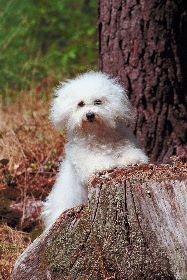 One of the many wonderful things about Reiki is its ability to heal the healer, so to speak. As we offer Reiki to others, the energy flowing through us benefits us, as well. This is one aspect of Reiki that makes it ideal for shelters and rescue organizations.
One of the many wonderful things about Reiki is its ability to heal the healer, so to speak. As we offer Reiki to others, the energy flowing through us benefits us, as well. This is one aspect of Reiki that makes it ideal for shelters and rescue organizations. I
I 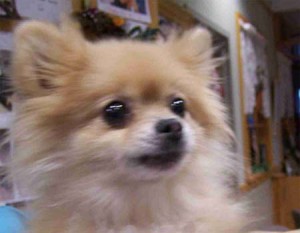 Honey was another Pomeranian I met briefly. I had seen her while working with Allie in the kennel wing one day. She was a beautiful buff color with bright eyes and a lovely energy about her. During one of my recent visits to AID, I heard that they had found Honey unconscious and rushed her to the vet.
Honey was another Pomeranian I met briefly. I had seen her while working with Allie in the kennel wing one day. She was a beautiful buff color with bright eyes and a lovely energy about her. During one of my recent visits to AID, I heard that they had found Honey unconscious and rushed her to the vet.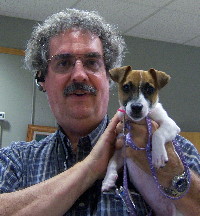 There were many bright spots this year, as well. I’ve
There were many bright spots this year, as well. I’ve 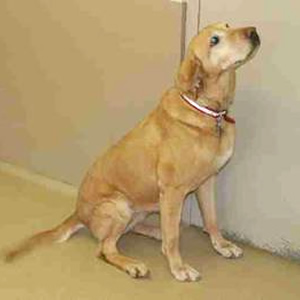 Molly is a charming lady Lab who is doing her thing oblivious to the firestorm of events going on around her. Molly had been adopted and was recently returned to AID after an incident at a family gathering that has sparked a flurry of lawsuits and legal maneuverings. It’s a sharp contrast between her attitude and the consternation of the humans involved many of whom could learn a great deal from Molly’s straightforward mindset.
Molly is a charming lady Lab who is doing her thing oblivious to the firestorm of events going on around her. Molly had been adopted and was recently returned to AID after an incident at a family gathering that has sparked a flurry of lawsuits and legal maneuverings. It’s a sharp contrast between her attitude and the consternation of the humans involved many of whom could learn a great deal from Molly’s straightforward mindset.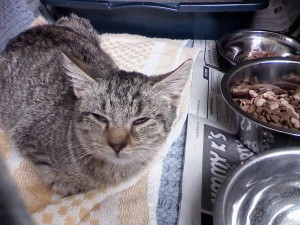 The Cat of the Year is GT, a grey tabby kitten I found near a farm while on my way to the vet with two of my dogs one evening not long ago. I saw her cross the road in front of my car and it was apparent that she was having difficulty. She lay down on the grass off the side of the road and was still there when we returned from the vet an hour or more later. I took the dogs home, got the smallest carrier we had, and went back to see if she was still there. She was, so I picked her up and put her in the carrier. I called the vet and took her there.
The Cat of the Year is GT, a grey tabby kitten I found near a farm while on my way to the vet with two of my dogs one evening not long ago. I saw her cross the road in front of my car and it was apparent that she was having difficulty. She lay down on the grass off the side of the road and was still there when we returned from the vet an hour or more later. I took the dogs home, got the smallest carrier we had, and went back to see if she was still there. She was, so I picked her up and put her in the carrier. I called the vet and took her there.